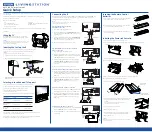
LOCREMCTRL to the Bay control QCBAY function block. A
parameter in function block LOCREM is set to choose if the
switch signals are coming from the local HMI or from an external
hardware switch connected via binary inputs.
Voltage control TR8ATCC and TCMYLTC
Automatic voltage control for tap changer TR8ATCC and Tap
changer control and supervision, 6 binary inputs TCMYLTC are
used for control of power transformers with a on-load tap
changer. The functions provide automatic regulation of the
voltage on the secondary side of transformers or alternatively
on a load point further out in the network.
Control of a single transformer, as well as control of up to two
transformers within a single RET650, or parallel control of up to
four transformers in two or even four separate RET650 is
possible. Note that the last alternative is achieved by using the
GOOSE interbay communication on the IEC 61850-8-1
protocol. For parallel control of power transformers, three
alternative methods are available, the master-follower method,
the circulating current method and the reverse reactance
method.
In RET650 a local HMI page with voltage control status and
manual control possibilities is available. Manual control is under
authority control if so defined.
IEC09000670-1-en.vsd
IEC09000670 V1 EN
Figure 8.
Manual control via local HMI
Voltage control includes many extra features such as possibility
of to avoid simultaneous tapping of parallel transformers,
extensive tap changer monitoring including contact wear and
hunting detection, monitoring of the power flow in the
transformer so that for example, the voltage control can be
blocked if the power reverses etc.
In manual operating mode it is possible to give raise- or lower-
commands to the load tap changer from the local HMI. Such
facilities are pre-defined in the factory.
Circuit breaker control for circuit breakers, CBC2, CBC3 and
CBC4
The CBC2, CBC 3 and CBC4 consists of 3 functions each:
• SCILO - The Logical node for interlocking. SCILO function
contains the logic to enable a switching operation, and
provides the information to SCSWI wether it is permitted to
operate due to actual switchyard topology. The
interlocking conditions are generated in separate function
blocks containing the interlocking logic.
• SCSWI - The Switch controller initializes and supervises all
functions to properly select and operate switching primary
apparatuses. The Switch controller may handle and
operate on one three-phase device.
• SXCBR - The circuit breaker controller SXCBR provides
the actual position status and pass the commands to the
primary circuit breaker and supervises the switching
operation and positions.
Logic rotating switch for function selection and LHMI
presentation SLGGIO
The logic rotating switch for function selection and LHMI
presentation SLGGIO (or the selector switch function block) is
used to get an enhanced selector switch functionality
compared to the one provided by a hardware selector switch.
Hardware selector switches are used extensively by utilities, in
order to have different functions operating on pre-set values.
Hardware switches are however sources for maintenance
issues, lower system reliability and an extended purchase
portfolio. The logic selector switches eliminate all these
problems.
Selector mini switch VSGGIO
The Selector mini switch VSGGIO function block is a
multipurpose function used for a variety of applications, as a
general purpose switch.
VSGGIO can be controlled from the menu or from a symbol on
the single line diagram (SLD) on the local HMI.
IEC 61850 generic communication I/O functions DPGGIO
The IEC 61850 generic communication I/O functions DPGGIO
function block is used to send double indications to other
systems or equipment in the substation using IEC61850. It is
especially used in the interlocking and reservation station-wide
logics.
Single point generic control 8 signals SPC8GGIO
The Single point generic control 8 signals SPC8GGIO function
block is a collection of 8 single point commands, designed to
bring in commands from REMOTE (SCADA) to those parts of
the logic configuration that do not need extensive command
receiving functionality (for example, SCSWI). In this way, simple
commands can be sent directly to the IED outputs, without
confirmation. The commands can be pulsed or steady with a
settable pulse time.
Transformer protection RET650
1MRK 504 137-BEN B
Product version: 1.3
ABB
19
















































